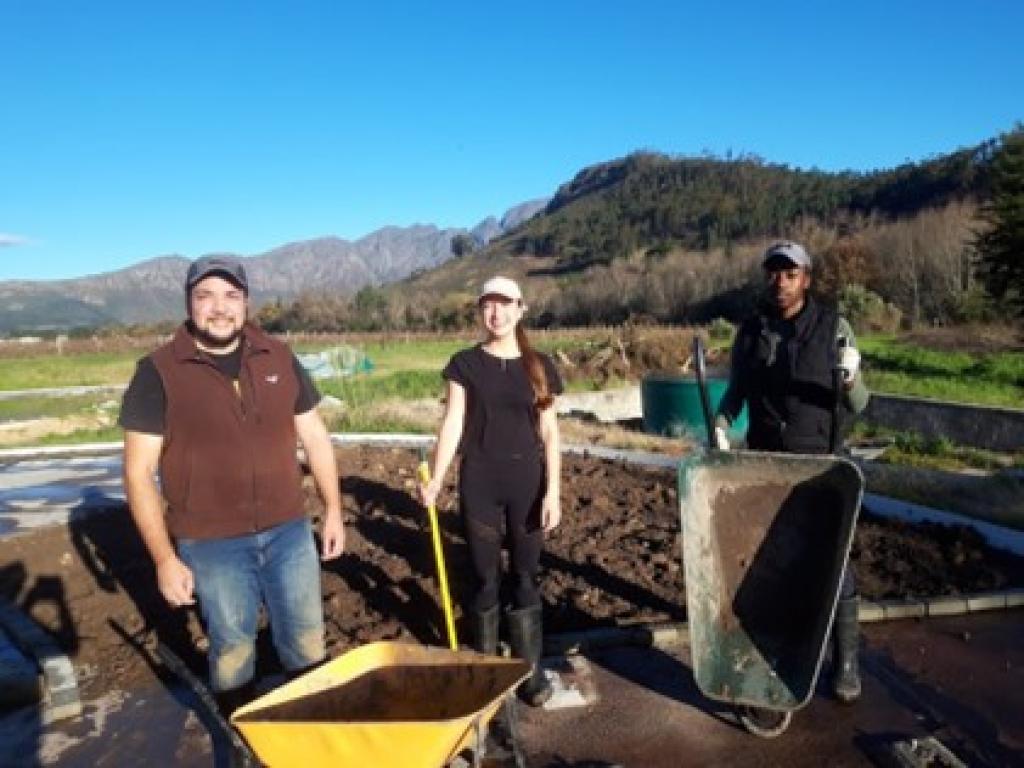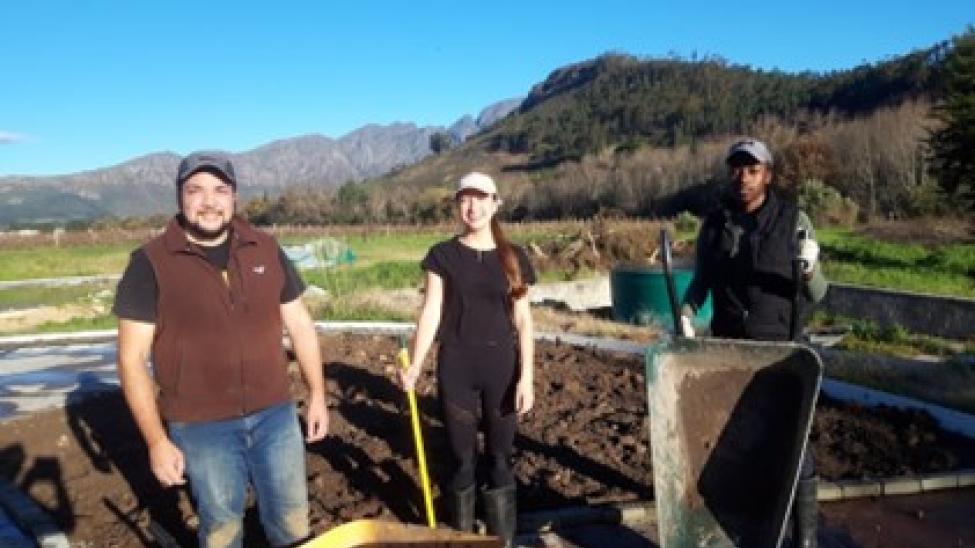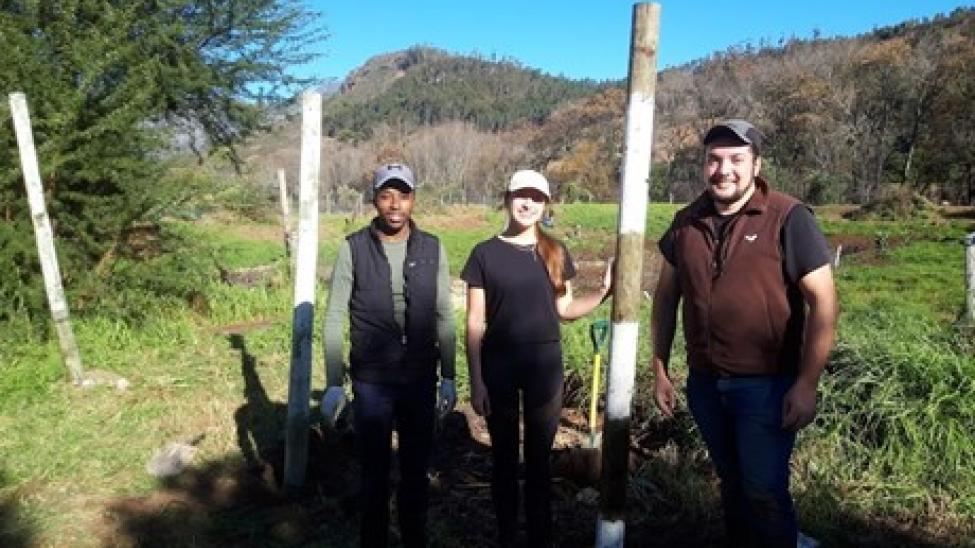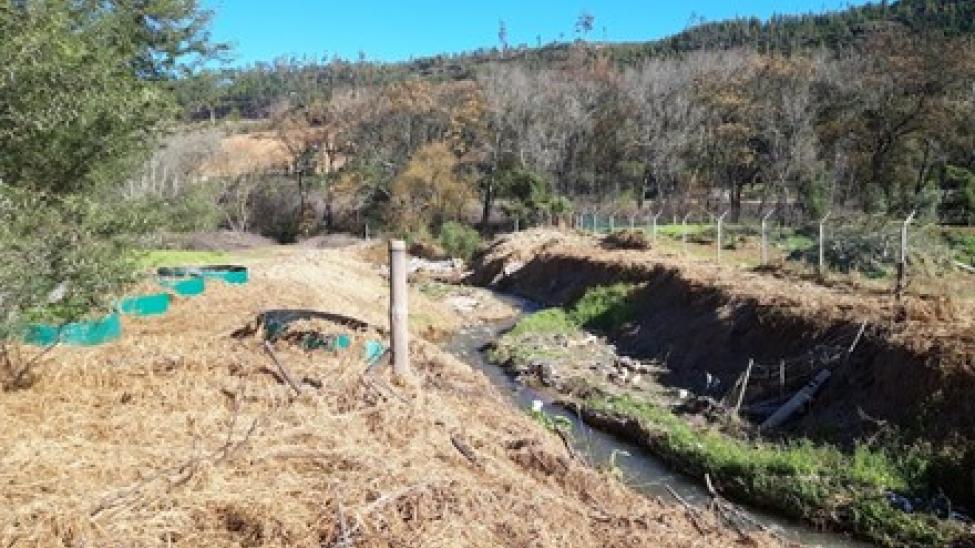Sustainability in action: recovering resources at the Water Hub

Ebrahim Behardien (EGS 4th Year), Camryn Lamont (EGS MSc) and Lephuthing Phate (EGS 2nd Year) completed the transfer of sludge to large drying area on the site. Once this is dried and tested, the material will be inserted into plastic bottles that have been collected from the river; sealed and placed in an inner cavity wall as insulation in a typical ‘shack’ dwelling that is being built at the Water Hub. The inner wall should also act as a fire retardant (June 2023).
The Water Hub is a living lab situated in the Franschhoek Valley and approximately 1km downstream of a large informal settlement. The researchers are breaking new ground in resource recovery and the reuse of these resources. The goal is to demonstrate innovation and inspiration in turning an old wastewater treatment plant into a resource recovery centre through a combination of research activities at a field scale that is accomplished by ‘learning by doing’, innovation, creativity and a focus on circularity.
The latest work involves the recovery of sludge that has accumulated in a final maturation pond. Sludge is a resource. The excavation and burial of sludge that sent to a landfill site should not be the only option.
The Water Hub is works with nature-based solutions and is learning how to work with nature. Current research is focused on characterising the sludge, assessing the risk and treating the potential risk using natural treatment processes, e.g. using lime to raise the pH of a sludge column to precipitate heavy metals; using UV light and heat to destroy pathogens. These experiments will take time because nature takes time. Some recent progress is captured in the photos and captions below.
Sustainability in action: recovering resources at the Water Hub
Ebrahim Behardien (EGS 4th Year), Camryn Lamont (EGS MSc) and Lephuthing Phate (EGS 2nd Year) completed the transfer of sludge to large drying area on the site. Once this is dried and tested, the material will be inserted into plastic bottles that have been collected from the river; sealed and placed in an inner cavity wall as insulation in a typical ‘shack’ dwelling that is being built at the Water Hub. The inner wall should also act as a fire retardant (June 2023).

Sustainability in action: recovering resources at the Water Hub
The EGS team installing the uprights of two new houses. One house will act as a control and other an experimental one which will be modified with several low-cost methods and materials. The modified house will Increase insulation during the winter and provide significant cooling in the summer (10 June 2023).

Sustainability in action: recovering resources at the Water Hub
A significant Western Cape contract was awarded to Green Intaba for rehabilitating the lower Stiebeuel River which flows through the Water Hub. Kikuyu grass has invaded the river. The brown stretches along the river were sprayed with an aqua-friends herbicide in preparation for a controlled burn. After the burn it will be resprayed and planted with indigenous riverine plants (10 June 2023).
